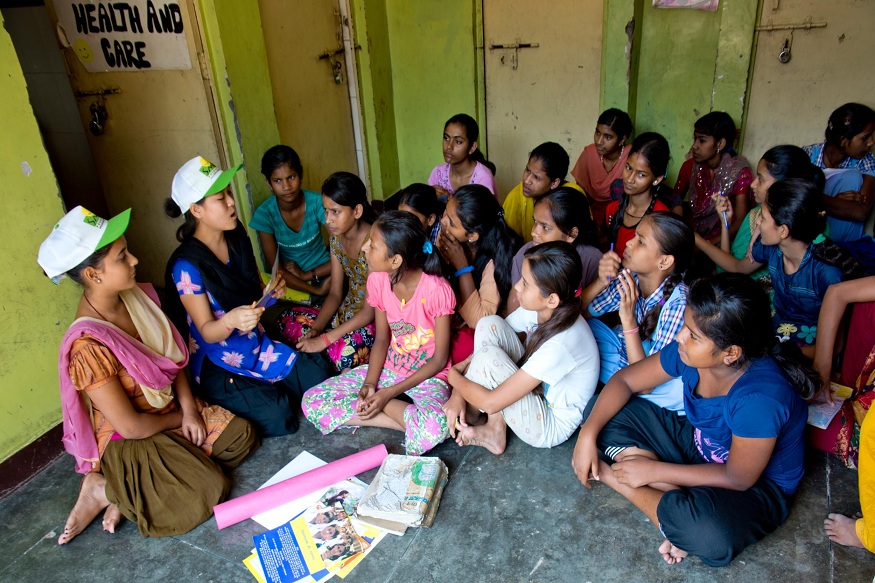
Every country across the globe accepts education as the essential basis for building a superior future. The educational process enables the expansion of minds and skill development, which grants people the ability to reshape their personal situations and their community surroundings.
The basic right to education in India eludes numerous girls who live in developing nations, particularly in India. Providing equal educational opportunities for girls serves both fairness and creates a stronger, more prosperous society that is healthier.
The Transformative Power of Educating Girls
Educating a girl provides her with more than basic reading and writing abilities. Through education, girls transform into self-assured, knowledgeable, autonomous people. Through education, girls gain the capability to make informed choices while learning about their constitutional rights and developing skills to actively participate in their communities.
Research indicates that girls who attain basic education stay out of early marriages and find employment, leading to family income growth. When girls receive education, their offspring become healthier while also having higher chances of attending school. Cultural changes from educating girls extend through multiple generations.
Girls’ education in India proves more capable of fighting against unfair treatment while defending themselves and taking an active role in building their environment. As a result, they transform into people who create change and serve as examples, advancing to positions of leadership.
Barriers Facing the Girl Child in India
Many obstacles remain, despite the advantages, which prevent Indian girls from receiving an education. Traditional cultural norms, together with financial difficulties and security worries, frequently block girls from pursuing education. Many families throughout various regions choose to educate their sons first because they think girls should focus on household work and that girls will eventually depart from the family after marriage.
The combination of insufficient school sanitation facilities, together with distant locations and sexual harassment concerns, leads many girls to stay away from school. Marginalised girls face the most challenging situation when it comes to accessing education. The combination of caste system status, economic hardship and gender-based prejudice produces extra barriers to educational access.
Why Investing in Girls’ Education Is the Smart Choice
Providing educational opportunities to girls offers the advantage of moral duty and a sound economic and social approach. Girls’ education in India allows them to become productive members of the national economy. The improved earning power of educated girls leads them to save more money, which they use to provide better healthcare and education to their children. The workforce participation of additional women drives productivity growth, which leads to economic development.
Education functions as a strong tool in promoting gender equality. The educational system breaks traditional gender assumptions to create new opportunities for girls to envision their futures as doctors, engineers, scientists, artists and leaders. When people view girls with equality, all members of society experience positive effects. The health of families improves, communities achieve greater safety, and nations achieve greater justice.
How Education Empowers Girls
The effective empowerment of girls through education requires attention to physical access and high-quality learning opportunities that match their needs. Education requires creating protected learning spots where girls experience both being heard and receiving proper respect. Education programmes need to teach girls through methods that strengthen their self-assurance and stimulate their natural inquisitiveness.
Educational curricula must incorporate lessons about health, rights, leadership, and life skills because these prepare girls to confront actual life difficulties. Educators need proper training to help their students grow, and schools need to collaborate with families to motivate girls to attend school continuously from primary to tertiary education.
Role models emerge when we empower girls through education. Girls develop future ambitions after observing women who hold influential positions as principals, professionals and politicians. Through education, young people can develop their dreams because education serves as the foundation for dream realisation.
The Role of Society in Educating Girls
Every girl’s education in India depends on a united action between individual people, their communities, and their governments. Societies need to motivate families to endorse their daughters’ dreams. Leaders in communities need to defend educational significance while fighting against traditional social rules that stand in the way.
The government should implement policies that remove monetary obstacles while building better facilities alongside creating secure educational environments for students. The combination of free textbooks, together with scholarships and midday meals, proves vital for sustaining girls in their school attendance. Public awareness initiatives demonstrate to society how investing in girls’ development leads to practical advantages for the future.
Non-governmental organisations, together with volunteers, actively participate in this mission. Their local support programmes and mentorship services help transform areas that standard systems have not reached effectively.
A Future Built on Education
National success throughout time depends on delivering education to every citizen of the country. Our present-day support for girls’ educational opportunities will create better conditions for future generations. The world we create through our efforts will enable every girl to develop into a leader who solves problems and makes beneficial social changes.
The status of girls in India’s population of 50% females determines the progress of the nation. Each girl who learns advances the entire community she belongs to. Through education, she obtains a transformative instrument that enables her to access opportunities and develop boundless possibilities.
The purpose extends beyond textbooks and classrooms because it enables girls to develop their thinking abilities, speaking skills, and acting capabilities. The goal is to teach girls how to become self-assured women who execute their tasks with determination.
Final Thoughts
The right to education exists beyond luxury status. Through education, girls gain the power to end poverty cycles, elevate their communities, and inspire generations to come. When we fail to develop the potential of any girl, we eliminate a chance to advance our world toward betterment.
Together, we must educate a girl to open educational doors which will empower them through education. We should dedicate ourselves to supporting the girl child in India to create an environment where all children can succeed without gender barriers. Our combined dedication to gender equality will create an environment where girls can become leaders while thriving to make substantial differences in the world.






